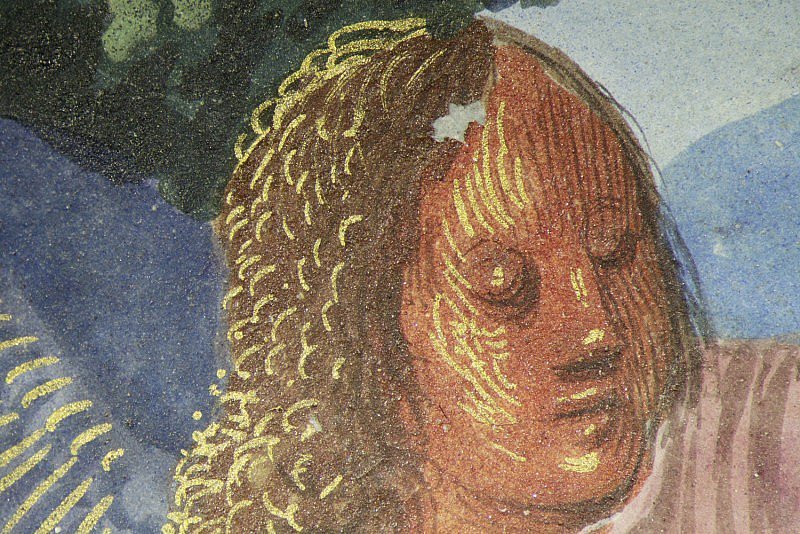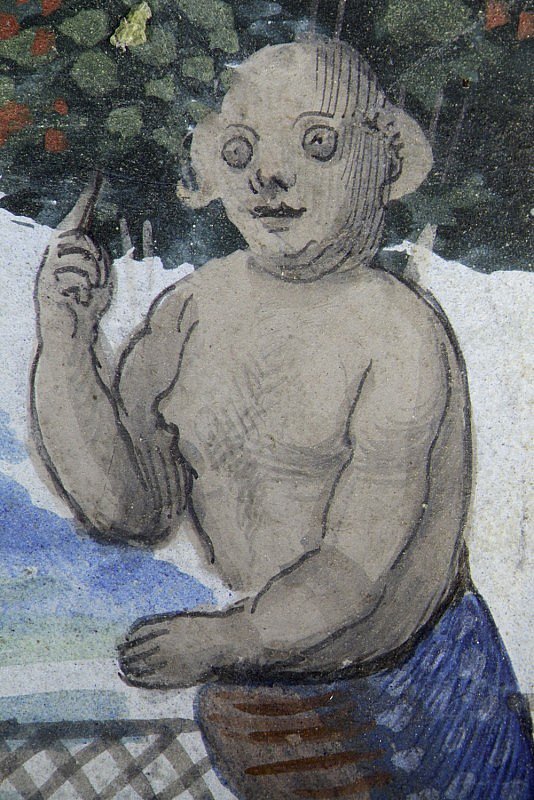Underdrawing
Artists' Techniques
Preparatory drawings, loosely painted with a liquid medium (i.e. brush and ink), are present on most pages.
Architectural features as well as the outlines, faces and clothes of the figures were roughly sketched. Sketches were not always followed closely at the painting stage, as is especially apparent in drapery folds.
The naked bodies of Adam and Eve were carefully drawn, particularly the figure of Adam in the bottom left image on fol. 4r.
A straight line running between or just above the eyes was often drawn to help position them within the face – this is most evident in the figures of the young Virgin Mary and St Anne on fol. 9r.
Select the ‘infrared’ layer when viewing each of the folios on the right to see the underdrawings.


Temptation of Eve; Eve offering fruit to Adam; Expulsion of Adam and Eve
The infrared image of this page reveals the careful way in which Adam and Eve’s bodies were drawn, especially clear in the body of Adam in the lower left scene. It also shows that the serpent tempting Eve was initially designed to have wings, one of which was sketched but never painted.
